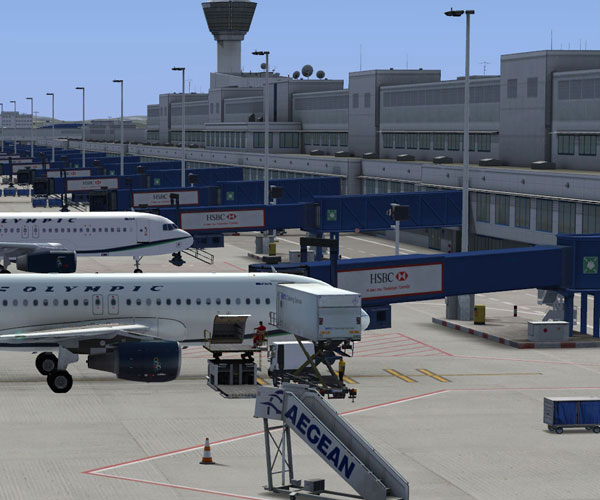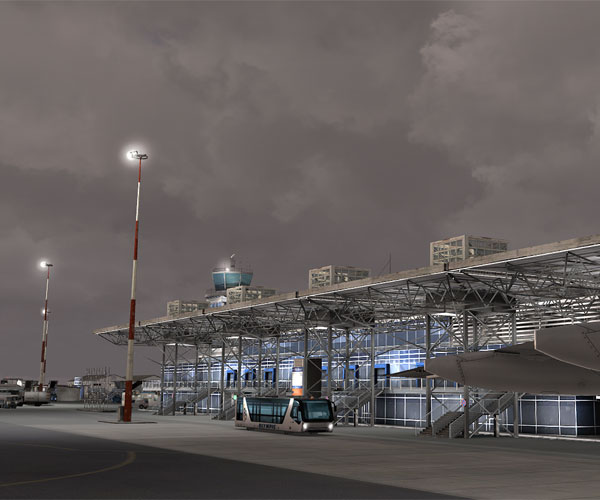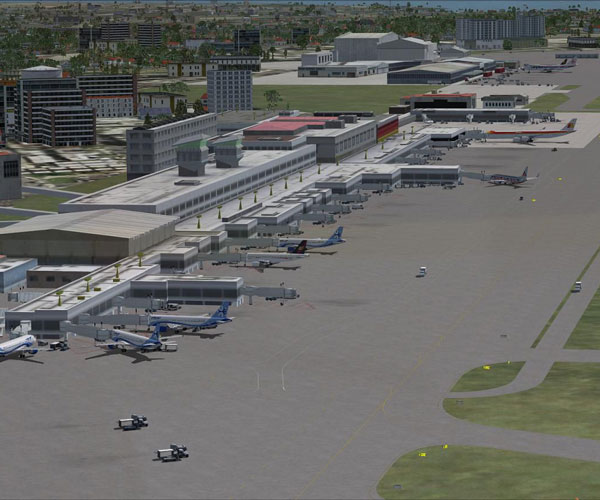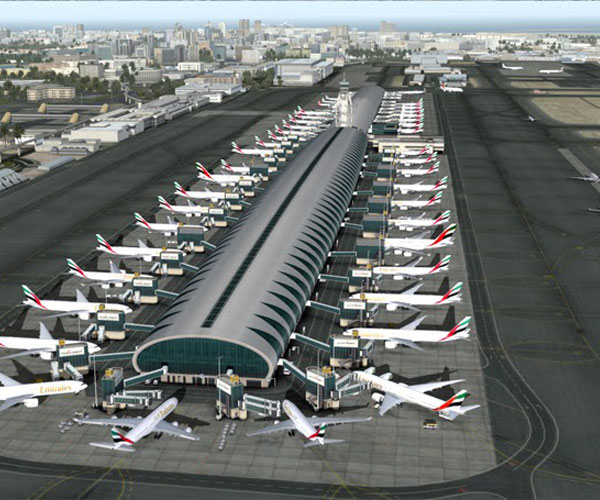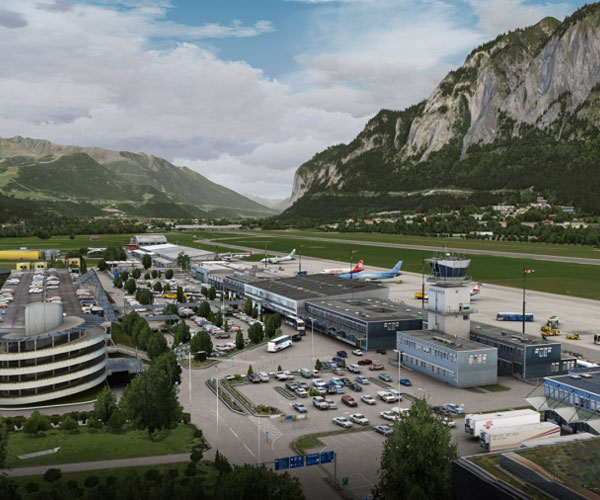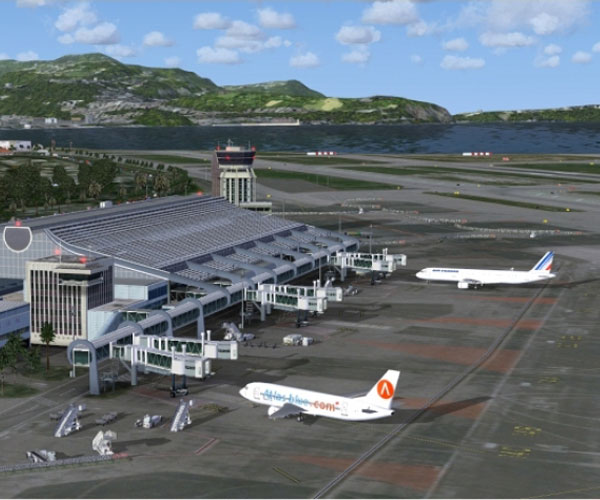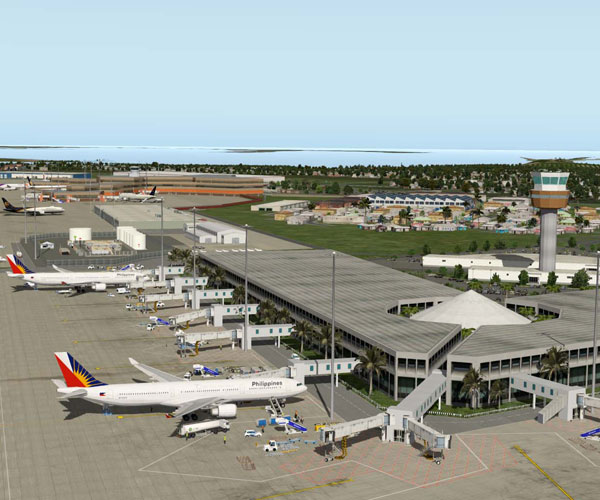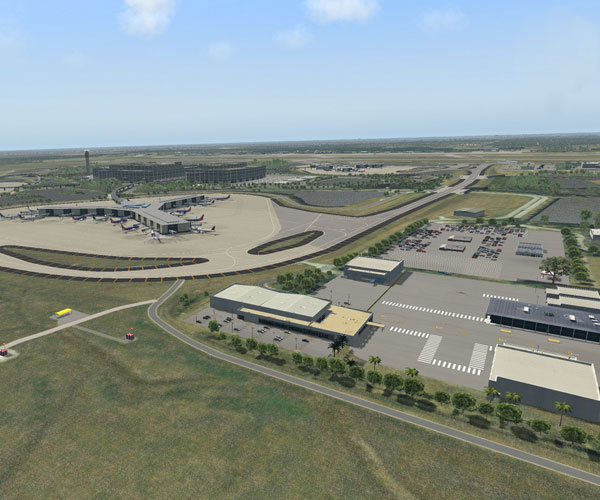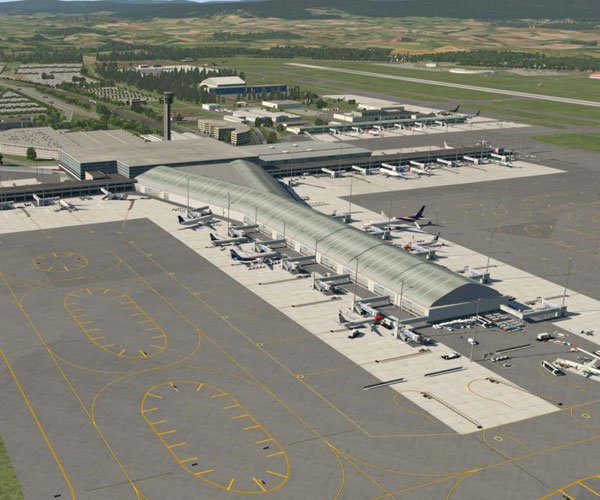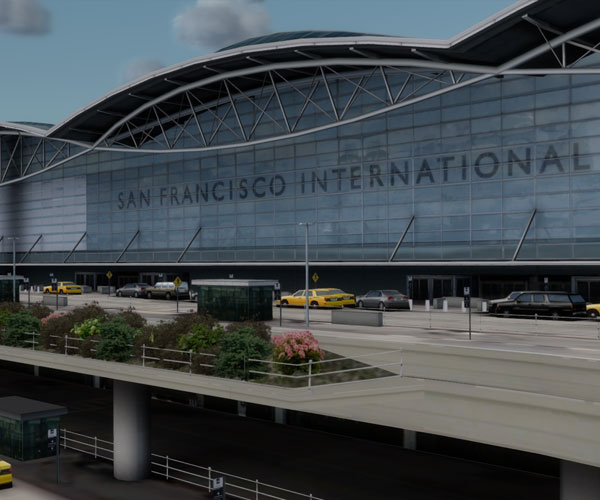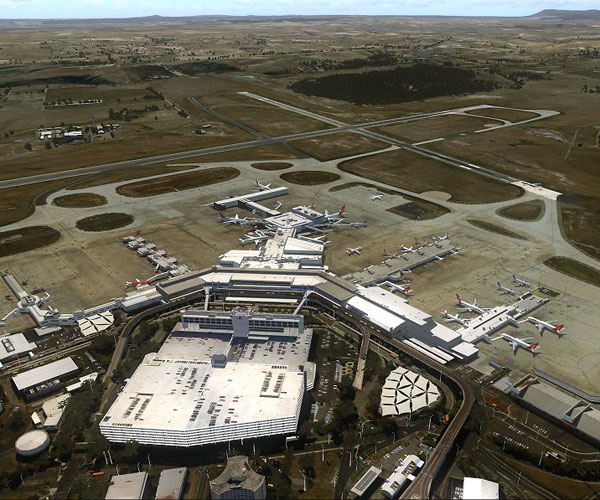Charter
About
Charter
Charter was inaugurated to serve passenger flights to/from international destinations with increased tourist traffic, depending on the season. It is simulating the financial model of a real airline (ticket income, aircraft maintenance, pilot salaries, airport expenses, catering, fuel, etc.).
All aircraft have unique registrations and are occupied by the pilots until they complete their flight and send their PIREP. Each aircraft is situated in a specific airport and the pilot must fly it from there to any available destination as per the schedule. Once the PIREP is sent, the aircraft moves to the destination airport awaiting its next flight/booking.
For anything regarding Charter, contact the division's manager at charter@oav.gr
For more info please contact the Pilots' Manager.
Features
How does it work?
Charter uses the same financial model used by OAV's Cargo, Airlines, Executive and Supersonic. This financial model was successfully launched by Cargo, the first time ever by a Greek virtual airline and it gives the pilot the chance to be part of the airline's progress through his/her activity.
Actual aircraft registrations according to the actual fleet of the airline and simulation of actual aircraft purchases or leases
Booking a specific aircraft according to registration for the purpose of flying
The aircraft is released at the airport at which the last pilot landed
Pilots get paid on a monthly basis and also according to their activity
Ticket income depending on the load factor of the flight, ticket costs depending on the distance flown and demand according to the route
Direct and indirect operating costs of a flight such as fuel, aircraft cleaning, landing taxes, etc
Automatic sending of PIREPS through OAV ACARS
Requirements
What do you need?
To join Charter you need to meet the following requirements
have the rank of Captain (if you are a member of OAV) or equivalent experience to justify the rank of Captain from another VA or organization (if you are not a member and want to join us now).
complete successfully a multiple choice test
complete a checkride to assess your basic flying skills by executing a small flight under IFR rules and ATC.
Fleet


Airbus A300-605R
Fleet Size: 1 | Seats: 266
The Airbus A300 is a short- to medium-range widebody jet airliner. Launched in 1972 as the world's first twin-engined widebody, it was the first product of Airbus Industrie, a consortium of European aerospace companies, fully owned today by EADS. The A300 can typically seat 266 passengers in a two-class layout, with a maximum range of 4,070 nautical miles (7,540 km) when fully loaded, depending on model


Airbus A319-100
Fleet Size: 4 | Seats: 138
The Airbus A320 family consists of short- to medium-range, narrow-body, commercial passenger jet airliners manufactured by Airbus. The family includes the A318, A319, A320 and A321, plus the ACJ business jet. The A320's are also named A320ceo (current engine option) after the introduction of the A320neo. Final assembly of the family in Europe takes place in Toulouse, France, and Hamburg, Germany. Since 2009, a plant in Tianjin, China, has also started producing aircraft for Chinese airlines. In April 2013, Airbus has started construction work on a new production facility for the A319, A320 and A321 variants in Mobile, Alabama. The aircraft family can accommodate up to 220 passengers and has a range of 3,100 to 12,000 km (1,700 to 6,500 nmi), depending on model.


Airbus A320-200
Fleet Size: 18 | Seats: 168
The Airbus A320 family consists of short- to medium-range, narrow-body, commercial passenger jet airliners manufactured by Airbus. The family includes the A318, A319, A320 and A321, plus the ACJ business jet. The A320's are also named A320ceo (current engine option) after the introduction of the A320neo. Final assembly of the family in Europe takes place in Toulouse, France, and Hamburg, Germany. Since 2009, a plant in Tianjin, China, has also started producing aircraft for Chinese airlines. In April 2013, Airbus has started construction work on a new production facility for the A319, A320 and A321 variants in Mobile, Alabama. The aircraft family can accommodate up to 220 passengers and has a range of 3,100 to 12,000 km (1,700 to 6,500 nmi), depending on model.


Airbus A321-200
Fleet Size: 5 | Seats: 185
The Airbus A320 family consists of short- to medium-range, narrow-body, commercial passenger jet airliners manufactured by Airbus. The family includes the A318, A319, A320 and A321, plus the ACJ business jet. The A320's are also named A320ceo (current engine option) after the introduction of the A320neo. Final assembly of the family in Europe takes place in Toulouse, France, and Hamburg, Germany. Since 2009, a plant in Tianjin, China, has also started producing aircraft for Chinese airlines. In April 2013, Airbus has started construction work on a new production facility for the A319, A320 and A321 variants in Mobile, Alabama. The aircraft family can accommodate up to 220 passengers and has a range of 3,100 to 12,000 km (1,700 to 6,500 nmi), depending on model.


Airbus A330-200
Fleet Size: 2 | Seats: 253
The Airbus A330 is a wide-body twin-engine jet airliner made by Airbus, a division of EADS. Versions of the A330 have a range of 7,400 to 13,430 kilometres (4,000 to 7,250 nm) and can accommodate up to 335 passengers in a two-class layout or carry 70 tonnes (150,000 lb) of cargo.
The origin of the A330 dates to the 1970s as one of several conceived derivatives of Airbus's first airliner, the A300. The A330 was developed in parallel with the A340, which shared many common airframe components but differed in number of engines. Both airliners incorporated fly-by-wire flight control technology, first introduced on an Airbus aircraft with the A320, as well as the A320's six-display glass cockpit. In June 1987, after receiving orders from various customers, Airbus launched the A330 and A340. The A330 was Airbus's first airliner that offered a choice of three engines: General Electric CF6, Pratt & Whitney PW4000, and Rolls-Royce Trent 700


Airbus A330-300
Fleet Size: 3 | Seats: 295
The Airbus A330 is a wide-body twin-engine jet airliner made by Airbus, a division of EADS. Versions of the A330 have a range of 7,400 to 13,430 kilometres (4,000 to 7,250 nm) and can accommodate up to 335 passengers in a two-class layout or carry 70 tonnes (150,000 lb) of cargo.
The origin of the A330 dates to the 1970s as one of several conceived derivatives of Airbus's first airliner, the A300. The A330 was developed in parallel with the A340, which shared many common airframe components but differed in number of engines. Both airliners incorporated fly-by-wire flight control technology, first introduced on an Airbus aircraft with the A320, as well as the A320's six-display glass cockpit. In June 1987, after receiving orders from various customers, Airbus launched the A330 and A340. The A330 was Airbus's first airliner that offered a choice of three engines: General Electric CF6, Pratt & Whitney PW4000, and Rolls-Royce Trent 700


Airbus A340-300
Fleet Size: 2 | Seats: 295
The Airbus A340 is a long-range four-engine wide-body commercial passenger jet airliner. Developed and produced by Airbus Industrie the A340 was assembled in Toulouse, France. It seats up to 375 passengers in the standard variants and 440 in the stretched −600 series. Depending on the model, it has a range of between 6,700 to 9,000 nautical miles (12,400 to 17,000 km). It is similar in design to the twin-engined A330 with which it was concurrently designed. Its distinguishing features are four high-bypass turbofan engines and three-bogie main landing gear.
Airbus manufactured the A340 in four fuselage lengths. The initial variant, A340-300, which entered service in 1993, measured 59.39 metres (194.8 ft). The shorter −200 was developed next, and the A340-600 was a 15.91 metres (52.2 ft) stretch of the −200. The −600 was developed alongside the shorter A340-500, which would become the longest-ranged commercial airliner until the arrival of the Boeing 777-200LR.


Airbus A340-600
Fleet Size: 2 | Seats: 380
The Airbus A340 is a long-range four-engine wide-body commercial passenger jet airliner. Developed and produced by Airbus Industrie the A340 was assembled in Toulouse, France. It seats up to 375 passengers in the standard variants and 440 in the stretched −600 series. Depending on the model, it has a range of between 6,700 to 9,000 nautical miles (12,400 to 17,000 km). It is similar in design to the twin-engined A330 with which it was concurrently designed. Its distinguishing features are four high-bypass turbofan engines and three-bogie main landing gear.
Airbus manufactured the A340 in four fuselage lengths. The initial variant, A340-300, which entered service in 1993, measured 59.39 metres (194.8 ft). The shorter −200 was developed next, and the A340-600 was a 15.91 metres (52.2 ft) stretch of the −200. The −600 was developed alongside the shorter A340-500, which would become the longest-ranged commercial airliner until the arrival of the Boeing 777-200LR.


Airbus A350-900
Fleet Size: 1 | Seats: 315
The Airbus A340 is a long-range four-engine wide-body commercial passenger jet airliner. Developed and produced by Airbus Industrie the A340 was assembled in Toulouse, France. It seats up to 375 passengers in the standard variants and 440 in the stretched −600 series. Depending on the model, it has a range of between 6,700 to 9,000 nautical miles (12,400 to 17,000 km). It is similar in design to the twin-engined A330 with which it was concurrently designed. Its distinguishing features are four high-bypass turbofan engines and three-bogie main landing gear.
Airbus manufactured the A340 in four fuselage lengths. The initial variant, A340-300, which entered service in 1993, measured 59.39 metres (194.8 ft). The shorter −200 was developed next, and the A340-600 was a 15.91 metres (52.2 ft) stretch of the −200. The −600 was developed alongside the shorter A340-500, which would become the longest-ranged commercial airliner until the arrival of the Boeing 777-200LR.


Airbus A380-800
Fleet Size: 1 | Seats: 644
The Airbus A380 is a double-deck, wide-body, four-engine jet airliner. It is the world's largest passenger airliner; many airports have upgraded their facilities to accommodate it because of its size. Initially named Airbus A3XX, Airbus designed the aircraft to challenge Boeing's monopoly in the large-aircraft market; the A380 made its first flight on 27 April 2005 and began commercial service in October 2007 with Singapore Airlines.


Avro RJ100
Fleet Size: 6 | Seats: 100
The British Aerospace 146 (also BAe 146) is a regional airliner that was manufactured in the United Kingdom by British Aerospace, later part of BAE Systems. Production ran from 1983 until 2002. Manufacture of an improved version known as the Avro RJ began in 1992. A further-improved version with new engines, the Avro RJX, was announced in 1997, but only two prototypes and one production aircraft were built before production ceased in 2001. With 387 aircraft produced, the Avro RJ/BAe 146 is the most successful British civil jet programme.


Boeing B727-200Adv
Fleet Size: 1 | Seats: 148
The Boeing 727 is a midsized, narrow-body three-engined jet aircraft built by Boeing Commercial Airplanes from the early 1960s to 1984. It can carry 149 to 189 passengers and later models can fly up to 2,700 nautical miles (5,000 km) nonstop. Intended for short and medium-length flights, the 727 can use relatively short runways at smaller airports. It has three Pratt & Whitney JT8D engines below the T-tail, one on each side of the rear fuselage with a center engine that connects through an S-duct to an inlet at the base of the fin. The 727 is the only Boeing trijet, as a commercial design entering production


Boeing B737-200Adv
Fleet Size: 1 | Seats: 102
The Boeing 737 Next Generation, commonly abbreviated as Boeing 737NG, is the name given to the −600/-700/-800/-900 series of the Boeing 737 aircraft. It is the third generation derivative of the 737, and follows the 737 Classic (−300/-400/-500) series, which began production in the 1980s. They are short- to medium-range, narrow-body jet airliners. Produced since 1996 by Boeing Commercial Airplanes, the 737NG series includes 4 variations and can seat between 110 to 210 passengers


Boeing B737-600
Fleet Size: 3 | Seats: 110
The Boeing 737 Next Generation, commonly abbreviated as Boeing 737NG, is the name given to the −600/-700/-800/-900 series of the Boeing 737 aircraft. It is the third generation derivative of the 737, and follows the 737 Classic (−300/-400/-500) series, which began production in the 1980s. They are short- to medium-range, narrow-body jet airliners. Produced since 1996 by Boeing Commercial Airplanes, the 737NG series includes 4 variations and can seat between 110 to 210 passengers.


Boeing B737-700
Fleet Size: 3 | Seats: 126
The Boeing 737 Next Generation, commonly abbreviated as Boeing 737NG, is the name given to the −600/-700/-800/-900 series of the Boeing 737 aircraft. It is the third generation derivative of the 737, and follows the 737 Classic (−300/-400/-500) series, which began production in the 1980s. They are short- to medium-range, narrow-body jet airliners. Produced since 1996 by Boeing Commercial Airplanes, the 737NG series includes 4 variations and can seat between 110 to 210 passengers.


Boeing B737-800
Fleet Size: 27 | Seats: 162
The Boeing 737 Next Generation, commonly abbreviated as Boeing 737NG, is the name given to the −600/-700/-800/-900 series of the Boeing 737 aircraft. It is the third generation derivative of the 737, and follows the 737 Classic (−300/-400/-500) series, which began production in the 1980s. They are short- to medium-range, narrow-body jet airliners. Produced since 1996 by Boeing Commercial Airplanes, the 737NG series includes 4 variations and can seat between 110 to 210 passengers.


Boeing B737-900
Fleet Size: 3 | Seats: 177
The Boeing 737 Next Generation, commonly abbreviated as Boeing 737NG, is the name given to the −600/-700/-800/-900 series of the Boeing 737 aircraft. It is the third generation derivative of the 737, and follows the 737 Classic (−300/-400/-500) series, which began production in the 1980s. They are short- to medium-range, narrow-body jet airliners. Produced since 1996 by Boeing Commercial Airplanes, the 737NG series includes 4 variations and can seat between 110 to 210 passengers.


Boeing B747-200
Fleet Size: 2 | Seats: 452
The Boeing 747 is a wide-body commercial airliner and cargo transport aircraft, often referred to by its original nickname, Jumbo Jet, or Queen of the Skies. It is among the world's most recognizable aircraft and was the first wide-body ever produced. Manufactured by Boeing's Commercial Airplane unit in the United States, the original version of the 747 was two and a half times larger in capacity than the Boeing 707, one of the common large commercial aircraft of the 1960s. First flown commercially in 1970, the 747 held the passenger capacity record for 37 years


Boeing B747-400
Fleet Size: 10 | Seats: 524
The Boeing 747 is a wide-body commercial airliner and cargo transport aircraft, often referred to by its original nickname, Jumbo Jet, or Queen of the Skies. It is among the world's most recognizable aircraft and was the first wide-body ever produced. Manufactured by Boeing's Commercial Airplane unit in the United States, the original version of the 747 was two and a half times larger in capacity than the Boeing 707, one of the common large commercial aircraft of the 1960s. First flown commercially in 1970, the 747 held the passenger capacity record for 37 years


Boeing B757-200
Fleet Size: 2 | Seats: 200
The Boeing 757 is a mid-size, narrow-body twin-engine jet airliner that was designed and built by Boeing Commercial Airplanes. It is the manufacturer's largest single-aisle passenger aircraft and was produced from 1981 to 2004. The twinjet has a two-crew member glass cockpit, turbofan engines, a conventional tail and, for reduced aerodynamic drag, a supercritical wing design. Intended to replace the smaller three-engine 727 on short and medium routes, the 757 can carry 200 to 289 passengers for a maximum of 3,150 to 4,100 nautical miles (5,830 to 7,600 km), depending on variant. The 757 was designed concurrently with a wide-body twinjet, the 767, and owing to shared features pilots can obtain a common type rating that allows them to operate both aircraft


Boeing B757-300
Fleet Size: 1 | Seats: 243
The Boeing 757 is a mid-size, narrow-body twin-engine jet airliner that was designed and built by Boeing Commercial Airplanes. It is the manufacturer's largest single-aisle passenger aircraft and was produced from 1981 to 2004. The twinjet has a two-crew member glass cockpit, turbofan engines, a conventional tail and, for reduced aerodynamic drag, a supercritical wing design. Intended to replace the smaller three-engine 727 on short and medium routes, the 757 can carry 200 to 289 passengers for a maximum of 3,150 to 4,100 nautical miles (5,830 to 7,600 km), depending on variant. The 757 was designed concurrently with a wide-body twinjet, the 767, and owing to shared features pilots can obtain a common type rating that allows them to operate both aircraft


Boeing B767-300
Fleet Size: 1 | Seats: 269
The Boeing 767 is a mid- to large-size, long-range, wide-body twin-engine jet airliner built by Boeing Commercial Airplanes. It was the manufacturer's first wide-body twinjet and its first airliner with a two-crew glass cockpit. The aircraft has two turbofan engines, a conventional tail, and, for reduced aerodynamic drag, a supercritical wing design. Designed as a smaller wide-body airliner than earlier aircraft such as the 747, the 767 has seating capacity for 181 to 375 persons and a design range of 3,850 to 6,385 nautical miles (7,130 to 11,825 km), depending on variant. Development of the 767 occurred in tandem with a narrow-body twinjet, the 757, resulting in shared design features which allow pilots to obtain a common type rating to operate both aircraft


Boeing B777-200LR
Fleet Size: 14 | Seats: 301
The Boeing 777 is a long-range wide-body twin-engine jet airliner manufactured by Boeing Commercial Airplanes. It is the world's largest twinjet and has a typical seating capacity for 314 to 451 passengers, with a range of 5,235 to 9,380 nautical miles (9,695 to 17,370 km), depending on the version. Commonly referred to as the "Triple Seven", its distinguishing features include the largest-diameter turbofan engines of any aircraft, six wheels on each main landing gear, a circular fuselage cross-section and a blade-shaped tail cone. Developed in consultation with eight major airlines, the 777 was designed to replace older wide-body airliners and bridge the capacity difference between the 767 and 747. As Boeing's first fly-by-wire airliner, it has computer-mediated controls; it is also the first entirely computer-designed commercial aircraft.


Boeing B777-300ER
Fleet Size: 14 | Seats: 301
The Boeing 777 is a long-range wide-body twin-engine jet airliner manufactured by Boeing Commercial Airplanes. It is the world's largest twinjet and has a typical seating capacity for 314 to 451 passengers, with a range of 5,235 to 9,380 nautical miles (9,695 to 17,370 km), depending on the version. Commonly referred to as the "Triple Seven", its distinguishing features include the largest-diameter turbofan engines of any aircraft, six wheels on each main landing gear, a circular fuselage cross-section and a blade-shaped tail cone. Developed in consultation with eight major airlines, the 777 was designed to replace older wide-body airliners and bridge the capacity difference between the 767 and 747. As Boeing's first fly-by-wire airliner, it has computer-mediated controls; it is also the first entirely computer-designed commercial aircraft.


Bombardier DASH8-Q400
Fleet Size: 8 | Seats: 78
The Bombardier Dash 8 or Q-Series, previously known as the de Havilland Canada Dash 8 or DHC-8, is a series of twin-engined, medium range, turboprop airliners. Introduced by de Havilland Canada (DHC) in 1984, they are now produced by Bombardier Aerospace. Over 1,000 Dash 8s of all models have been built, with Bombardier forecasting a total production run of 1,192 aircraft of all variants through 2016


McDonnell-Douglas MD11
Fleet Size: 11 | Seats: 323
The McDonnell Douglas MD-11 is a three-engine medium- to long-range widebody jet airliner, manufactured by McDonnell Douglas and, later, by Boeing Commercial Airplanes. Based on the DC-10, it features a stretched fuselage, increased wingspan with winglets, refined airfoils on the wing and smaller tailplane, new engines and increased use of composite materials. Two of its engines are mounted on underwing pylons and a third engine at the base of the vertical stabilizer. It also features an all-digital glass cockpit that decreases the flight deck crew from the three required on the DC-10 to two by eliminating the necessity for a flight engineer.


McDonnell-Douglas MD82
Fleet Size: 2 | Seats: 172
The McDonnell Douglas MD-80 is a family of twin-engine, short- to medium-range, single-aisle commercial jet airliners. The MD-80 series were lengthened and updated from the DC-9. The airliner family can seat from 130 up to 172 passengers depending on variant and seating configuration.
The MD-80 series was introduced into commercial service on October 10, 1980 by Swissair. The series includes the MD-81, MD-82, MD-83, MD-87, and MD-88. These all have the same fuselage length except the shortened MD-87. The MD-80 series was followed into service in modified form by the MD-90 in 1995 and the MD-95/Boeing 717 in 1999
Hubs
LGAV - Greece
Athens International Airport "Eleftherios Venizelos" (Diethnís Aeroliménas Athinón "Elefthérios Venizélos"; (IATA: ATH, ICAO: LGAV), began operation on March 29, 2001 and is the primary civilian airport that serves the city of Athens and the region of Attica. The airport is the major hub and base of Aegean Airlines and Olympic Air. The airport serves more than 14 million travellers annually and its name honours the Greek statesman Eleftherios Venizelos. As of late 2011, the airport is the thirtieth busiest airport in Europe
LGTS - Greece
Thessaloniki International Airport “Macedonia” (ICAO: LGTS, IATA: SKG) is located 15 km southeast of the city of Thessaloniki, in Thermi municipality and in 2008 was the third busiest airport in Greece. It was previously called "Mikra Thessaloniki Airport" but was renamed in 1993 taking the name of the historical geographical region of Macedonia.The IATA name SKG comes from SaloniKa Greece.
It serves domestic and international flights to European countries and Cyprus. It operates 24 hours as a passenger and cargo terminal with 14 aircraft parking positions of all sizes. Ground handling is made by the Olympic Air, the Swissport and Goldair Handling Agent companies. The airport also houses Air Force squadrons and Thessaloniki’s Aero Club which operates 18 hours a day and rents light aircraft
MMMX - Mexico
Mexico City International Airport (Spanish: Aeropuerto Internacional de la Ciudad de México, AICM); officially Aeropuerto Internacional Benito Juárez (English: Benito Juárez International Airport) (IATA: MEX, ICAO: MMMX) is a commercial airport that serves Greater Mexico City. It is Mexico's busiest and Latin America's second busiest airport by passenger traffic; and it is both Mexico's and Latin America's busiest airport by aircraft movements. The airport sustains 35,000 jobs directly and around 15,000 indirectly in the immediate area. The airport is owned by Grupo Aeroportuario de la Ciudad de México and operated by Aeropuertos y Servicios Auxiliares, the government-owned corporation, which also operates 22 other airports throughout Mexico.
OMDB - UAE
Dubai International Airport (IATA: DXB, ICAO: OMDB) (Arabic: مطار دبي الدولي) is a major international airport located in Dubai, United Arab Emirates, and is the world's busiest airport by international passenger traffic. It is a major airline hub in the Middle East, and is the main airport of Dubai. It is situated in the Al Garhoud district, 2.5 nautical miles (4.6 km; 2.9 mi) east of Dubai.
LOWI - Austria
Innsbruck Airport (IATA: INN, ICAO: LOWI), also known as Kranebitten Airport, is the largest international airport in Tyrol in western Austria. It is located approximately 2.5 miles from the centre of Innsbruck. The airport, which was opened in 1925, handles regional flights around the Alps, as well as seasonal international traffic to further European destinations. During the winter, activity increases significantly, due to the high number of skiers travelling to the region.
Innsbruck Airport is well known for having a difficult approach due to surrounding terrain, prohibiting certain aircraft types from operating at the airport.
LFMN - France
Nice Côte d'Azur Airport (French: Aéroport Nice Côte d'Azur) (IATA: NCE, ICAO: LFMN) is an international airport located 3.2 NM (5.9 km; 3.7 mi) southwest[2] of Nice, in the Alpes-Maritimes départment of France. It is the third busiest airport in France and serves as a focus city for Air France and an operating base for easyJet.
RPLL - Philippines
The Ninoy Aquino International Airport (Filipino: Paliparang Pandaigdig ng Ninoy Aquino) or NAIA /ˈnaɪ.ə/, also known as Manila International Airport (IATA: MNL, ICAO: RPLL), is the airport serving Manila and its surroundingmetropolitan area. Located along the border between the cities of Pasay and Parañaque, about 7 kilometres (4.3 mi) south of Manila proper and southwest of Makati, NAIA is the main international gateway for travelers to the Philippinesand serves as a hub for AirAsia Zest, Cebu Pacific, PAL Express, Philippine Airlines, Tigerair Philippines, andPhilippines AirAsia. It is managed by the Manila International Airport Authority (MIAA), a branch of the Department of Transportation and Communications (DOTC).
KMCO - USA
Orlando International Airport (IATA: MCO, ICAO: KMCO, FAA LID: MCO) is an international airport six miles southeast of Orlando, Florida. It is the second-busiest airport in the state of Florida the 13th-busiest airport in the United States and the 29th-busiest airport in the world by passenger traffic.
ENGM - Norway
Oslo Airport (Norwegian: Oslo Lufthavn; IATA: OSL, ICAO: ENGM) is the main international airport serving Oslo, the capital of and most populous city in Norway. Oslo is also served by the low-cost Torp airport. Oslo Airport is the main domestic hub and international airport for Norway, and is the second-busiest airport in the Nordic countries. A hub for Scandinavian Airlines, an operating base for Norwegian Air Shuttle, and a focus city for Widerøe, it connects to 28 domestic and about 115 international destinations. Almost 26 million passengers traveled through the airport in 2016, making it the nineteenth-busiest airport in Europe.
KSFO - USA
San Francisco International Airport (IATA: SFO, ICAO: KSFO, FAA LID: SFO) is 13 miles (21 km) south of downtown San Francisco,California, near Millbrae and San Bruno in unincorporated San Mateo County. It has flights to points throughout North America and is a major gateway to Europe and Asia.
SFO is the largest airport in the Bay Area and the second busiest in California, after Los Angeles International Airport. In 2013 it was the seventh busiest in the United States and the twenty-first busiest airport in the world by passenger count. It is the fifth largest hub for United Airlines and functions as United's primary transpacific gateway
YMML - Australia
Melbourne Airport (IATA: MEL, ICAO: YMML), also known as Tullamarine Airport, is the primary airport serving the city of Melbourne, and the second busiest airport in Australia. It was opened in 1970 to replace the nearby Essendon Airport. Melbourne Airport is the sole international airport of the four airports serving the Melbourne metropolitan area.


